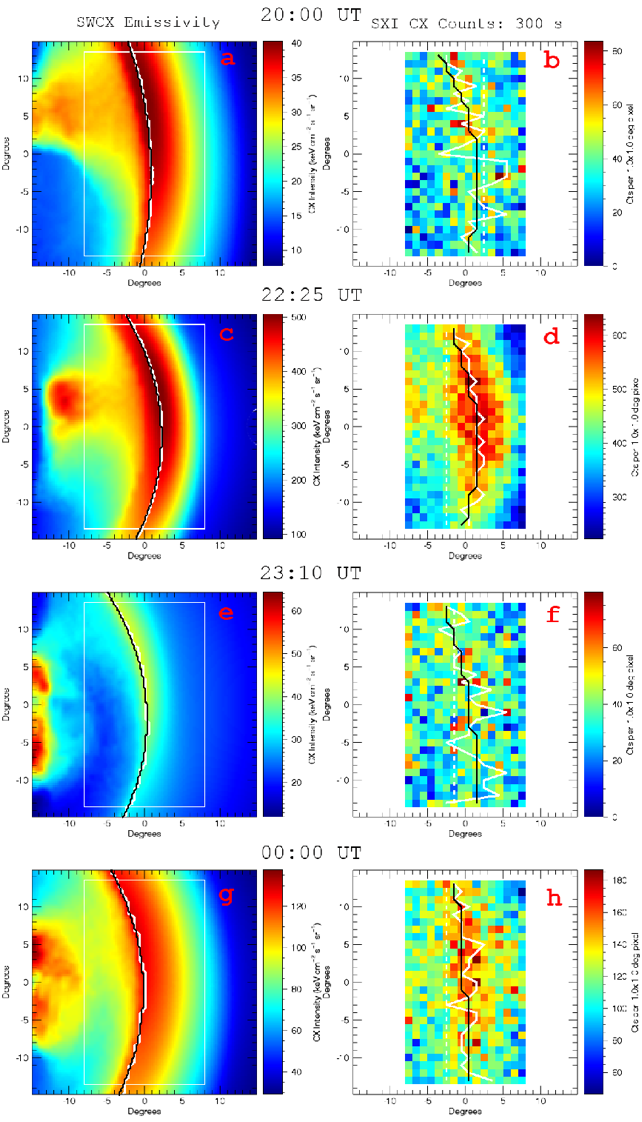MIST
Magnetosphere, Ionosphere and Solar-Terrestrial
Finding the Magnetopause Standoff Distance Using a Soft X-Ray Imager
By Andrey Samsonov (University College London)
The magnetopause standoff distance characterizes global magnetospheric compression and deformation in response to changes in the solar wind dynamic pressure and interplanetary magnetic field. We cannot derive this parameter directly from in situ spacecraft measurements because spacecraft cross the magnetopause rarely and in different regions along the magnetopause surface. However, it will be possible to obtain the time series of the magnetopause standoff distance in the near future using observations by soft X-ray imagers. In two companion papers (see below), we describe methods of finding the standoff distance from X-ray images. Soft X-rays are emitted in the magnetosheath and cusps as a result of charge exchange between heavy solar wind ions and exospheric neutrals. We use the results of MHD simulations to calculate the X-ray emissivity for different solar wind conditions. We simulate an artificial case with constant solar wind conditions and a case with an interplanetary coronal mass ejection (ICME) observed by the Wind spacecraft on 16-17 June 2012. Some MHD models predict relatively high density in the magnetosphere, larger than observed in the data. Correcting this, we develop magnetospheric masking methods to separate the magnetosphere from the magnetosheath and cusps.
We use the SXI_SIM numerical code developed at the University of Leicester to simulate the expected output of the Soft X-ray Imager (SXI) on board the forthcoming Solar wind Magnetosphere Ionosphere Link Explorer (SMILE) mission. Using the MHD results as input conditions, this code calculates the integrated emissivity along the Line-of-Sight (Ix) and SXI counts maps (see Figure 1). We verify the assumption that the maximum of the integrated emissivity is tangent to the magnetopause. Overall, the magnetopause is located close to the maximum Ix gradient or between the maximum Ix gradient and the maximum Ix depending on the method used. But since the angular distance between the maximum Ix gradient and the maximum Ix is relatively small (about 3°), the maximum Ix might be used as an indicator of the outer boundary of a wide magnetopause layer usually obtained in MHD simulations.

Original articles for further detail:
Samsonov, A., Carter, J. A., Read, A., Sembay, S., Branduardi-Raymont, G., Sibeck, D., & Escoubet, P. (2022). Finding magnetopause standoff distance using a soft X-ray imager: 1. Magnetospheric masking. Journal of Geophysical Research: Space Physics,
127, e2022JA030848. https://doi.org/10.1029/2022JA030848
Samsonov, A., Sembay, S., Read, A., Carter, J. A., Branduardi-Raymont, G., Sibeck, D., & Escoubet, P. (2022). Finding magnetopause standoff distance using a Soft X-ray Imager: 2. Methods to analyze 2-D X-ray images. Journal of Geophysical Research: Space Physics, 127, e2022JA030850. https://doi.org/10.1029/2022JA030850